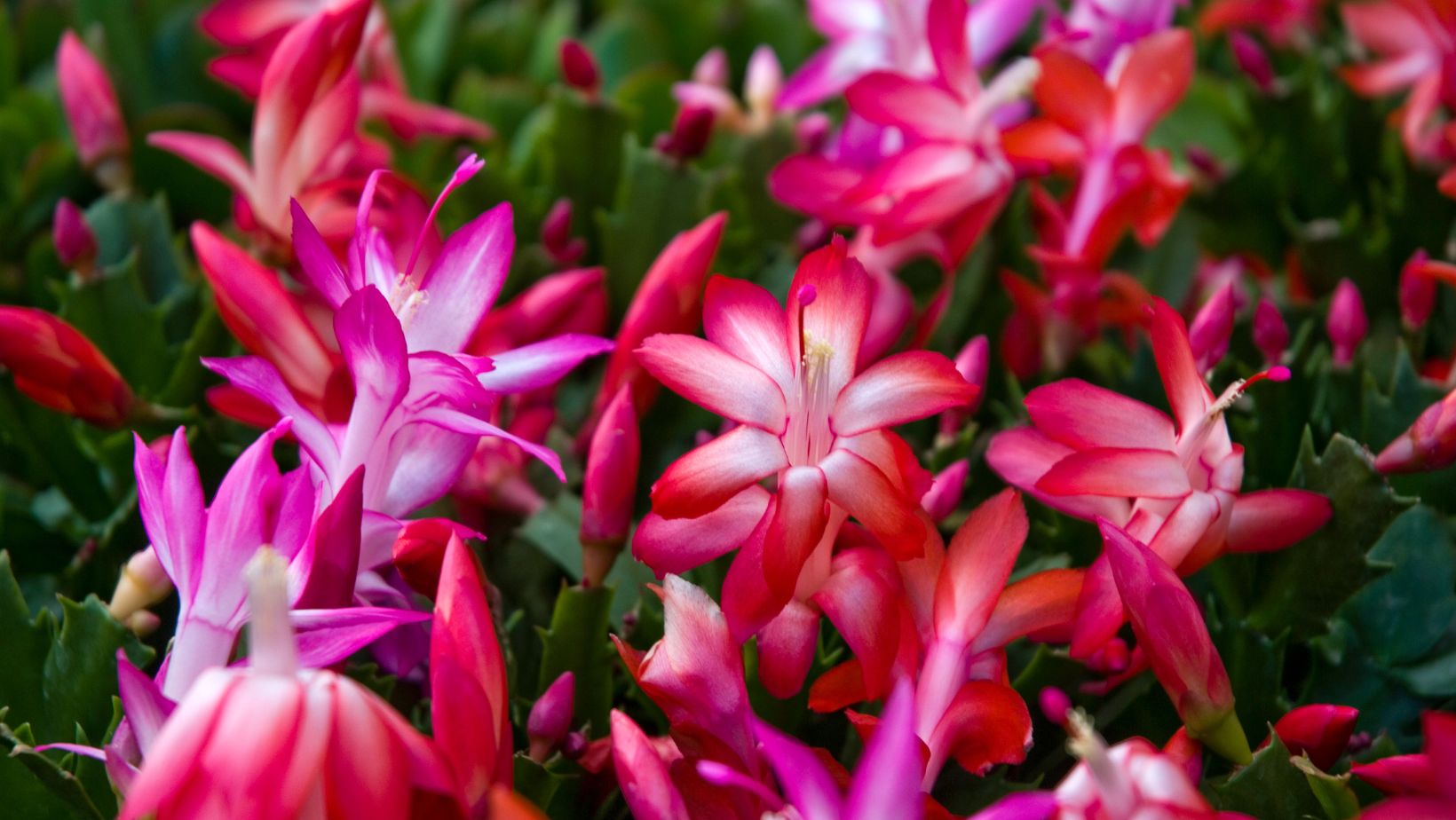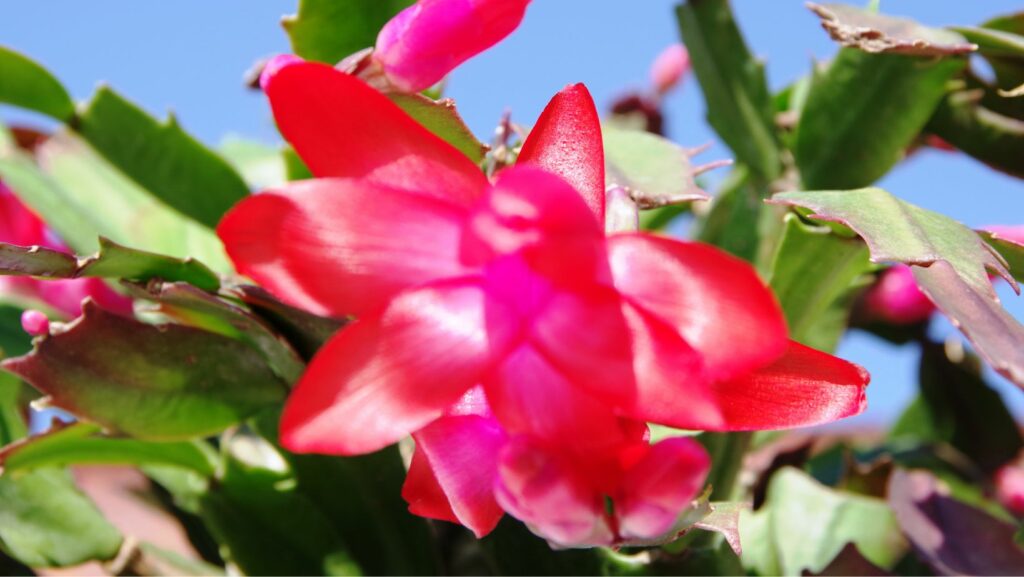
Why is my Christmas cactus dying? This is a question that I get asked a lot, and it’s a valid one! There are a few things that can cause your Christmas cactus to die, so let’s take a look at them.
Why is my Christmas Cactus Dying
One of the most common problems with Christmas cacti is that they start to die off after a few years. This is usually due to a lack of watering or fertilizer, but it can also be caused by too much direct sunlight. If you notice your Christmas cactus starting to die, there are a few things you can do to revive it.
First, make sure that you are watering your plant regularly. Christmas cacti need to be watered about once a week, and more often if they are in a pot with good drainage. If the plant is not getting enough water, the leaves will start to turn yellow and fall off.
Next, check the soil for nutrient levels. Christmas cacti need a well-balanced fertilizer that is high in phosphorus and low in nitrogen. You can find special cactus fertilizers at most garden stores. If you use a general all-purpose fertilizer, be sure to use half the recommended amount.

Finally, make sure that your plant is not getting too much direct sunlight. Christmas cacti need bright light, but too much sun can scorch the leaves and cause them to turn brown and fall off. If possible, move your plant to a spot where it will get indirect sunlight for part of the day.
The Christmas Cactus: A Plant With a Unique History
The Christmas cactus (scientific name: Schlumbergera Bridgesii) is a plant with a unique history. It is native to the rain forests of Brazil, where it grows in the crevices of rocks and trees. In its natural habitat, the Christmas cactus is an epiphyte, meaning that it does not grow in soil, but instead derives its nutrients from the air and rainwater.
The Christmas cactus was first introduced to Europe in 1837 by a Scottish botanist named Sir William Hooker. Hooker had obtained some plants from Brazil and brought them back to England, where they quickly became popular. In 1856, another Englishman, John Lindley, gave the plant its scientific name: Schlumbergera Bridgesii, in honor of its discoverer.
The Christmas cactus soon became a popular holiday plant in Europe and America. In 1882, an Englishman named John Gawler started selling the plants in America under the name “Christmas cacti” (plural). The Christmas cactus became so popular that by 1900 there were more than 1,000 varieties being grown.
Today, the Christmas cactus is still a popular holiday plant, and is widely available for purchase during the holiday season. If you are considering purchasing a Christmas cactus, there are a few things you should know about this interesting plant.
The Christmas Cactus: A Plant With Special Requirements
The Christmas cactus ( Schlumbergera truncata) is a popular holiday plant that is relatively easy to care for. However, it does have some specific requirements that must be met in order to thrive.
Native to the rainforests of Brazil, the Christmas cactus is adapted to a very different environment than the typical home. In its natural habitat, it receives dappled sunlight and high humidity. It also grows in a very loose, well-drained soil that is rich in organic matter.
In order to replicate these conditions as closely as possible, it is important to choose a potting mix that is light and airy. A mix of two parts peat moss and one part perlite or sand works well. The pot should have plenty of drainage holes, and the plant should be watered only when the soil is dry to the touch.
Christmas cacti are notoriously finicky about their light requirements. They need bright light, but not direct sunlight, which can burn their leaves. If the plant doesn’t get enough light, it will lose its vibrant color and fail to bloom. However, if it gets too much light, the leaves will become pale and yellowish.
Humidity is another important factor in keeping a Christmas cactus healthy. If the air in your home is too dry, the plant may drop its buds or flowers before they have a chance to open. One way to increase the humidity around your plant is to set the pot on a tray of pebbles filled with water. Just be sure that the bottom of the pot is not sitting in water.

With proper care, Christmas cacti can live for many years and become cherished family heirlooms.
The Most Common Reasons for Christmas Cactus Death
One of the most common reasons for Christmas cactus death is lack of water. These plants are native to rain forests, so they require lots of moisture. During the winter months, when they are typically grown indoors, they may not get enough natural humidity to stay hydrated. The leaves will begin to turn brown and fall off if the plant is too dry.
Another common cause of Christmas cactus death is over- watering. These plants are susceptible to root rot if they sit in water for too long. Be sure to allow the soil to dry out completely between waterings.
If your Christmas cactus is dying and you can’t figure out why, it might be due to too much or too little light. These plants need bright, indirect light to thrive. If they are placed in a dark room or in direct sunlight, they will begin to lose their color and eventually die.
Sometimes, Christmas cacti will die for no apparent reason. This is often due to transpiration, which is the plant’s process of losing water through its leaves. If the air around the plant is too dry, it will lose more water than it can replace and will eventually die.
How to Prevent Your Christmas Cactus From Dying
One of the most common problems with Christmas cacti is that they stop blooming. There are several reasons why this might happen:
- The plant isn’t getting enough light. Christmas cacti need bright light, but not direct sun, in order to bloom.
- The plant is too dry. These cacti like to be kept on the dry side, but if they get too dry, they will stop blooming.
- The plant is too wet. If the plant is sitting in water, or if the pot doesn’t have adequate drainage, the roots will rot and the plant will die.
- The plant is too cold. Christmas cacti prefer cool temperatures (around 60 degrees Fahrenheit), and if they get too cold, they will go into dormancy and will not bloom.
To prevent your Christmas cactus from dying, make sure it is getting enough light, water it regularly (but don’t overwater), and don’t let it get too cold.



